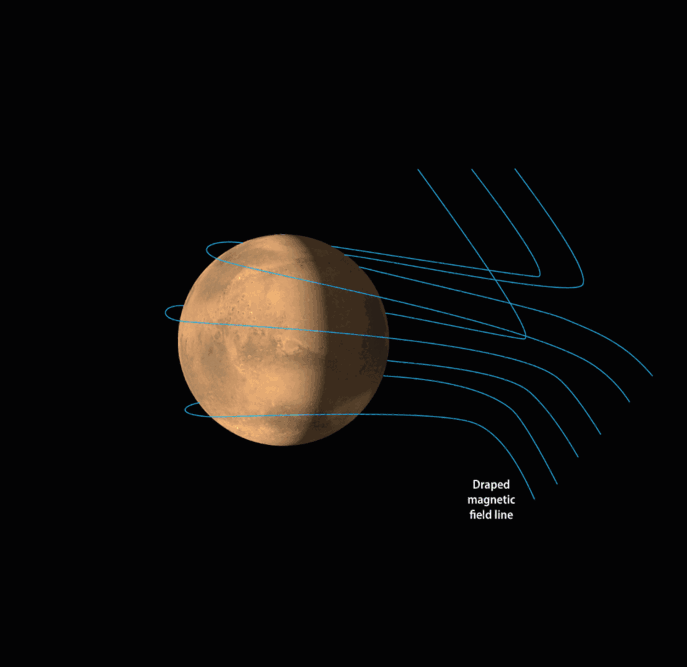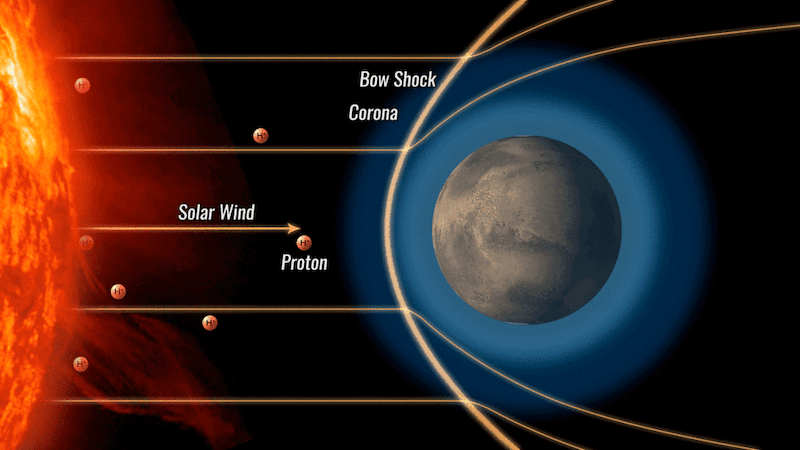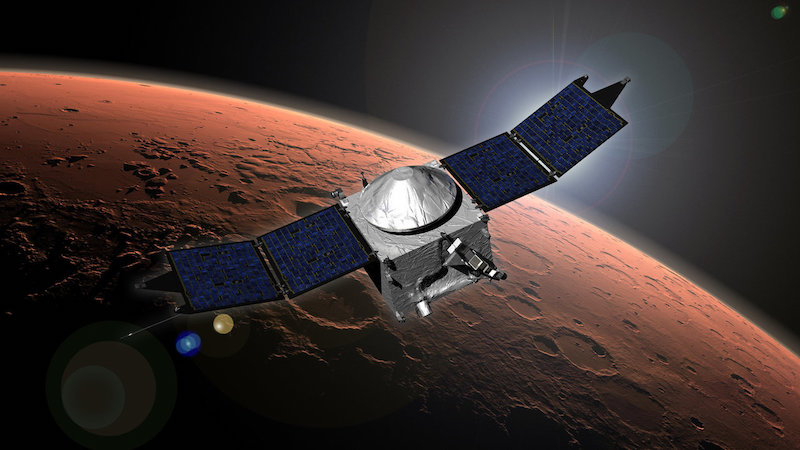
Auroras – typically seen at Earth’s far-northern or far-southern latitudes – are beautiful. And other planets have auroras too, including Mars. Spacecraft have even observed them from orbit. And now, for the first time, the NASA spacecraft MAVEN has observed two different types of auroras at the same time. NASA announced the findings, and what they mean, on November 9, 2022.
Double auroras in unique Martian light show
MAVEN has seen auroras before, but this is the first time it has witnessed two different kinds occurring at the same time. MAVEN – the Mars Atmosphere and Volatile Evolution mission – studies Mars’ thin atmosphere. It can also analyze how the sun interacts with the atmosphere. It does so in real time, which no other orbiter can do. This makes it a unique and important observing platform for monitoring how the atmosphere responds to the ultraviolet light coming from the sun. It’s these interactions that cause auroras, just like on Earth.
MAVEN used its Imaging Ultraviolet Spectrograph (IUVS) instrument to observe two types of auroras simultaneously: diffuse auroras and proton auroras. More on those below.
So how was MAVEN able to see this rare occurrence? Mostly just good timing, it turns out. Two events contributed to this: solar storms and dust storms.
Solar storms and dust storms
A huge solar storm on the sun on August 27, 2022, was the actual original cause of the auroras. Energetic particles in the solar wind, from solar flares and an intense coronal mass ejection (CME), hit the Martian atmosphere. Indeed, this was one of the brightest solar energetic particle (SEP) events seen by MAVEN so far. MAVEN’s Extreme Ultraviolet Monitor, Magnetometer, Solar Wind Ion Analyzer and Solar Wind Electron Analyzer instruments all contributed to studying the solar storm and the particles it unleashed.
Diffuse and proton auroras
The particles are able to penetrate deep into the atmosphere, creating diffuse auroras. Those auroras can be seen on the nightside of the planet.
Christina Lee, a member of the MAVEN mission team and space physicist at the University of California, Berkeley, said:
By utilizing space weather models of CME propagation, we determined when the structure would arrive and impact Mars. This allowed the MAVEN team to anticipate some exciting disturbances in Mars’ atmosphere from the impacts of the interplanetary CME and the associated SEPs.
Meanwhile, dust caused the other kind of auroras, the proton auroras. How? Right now it is almost the end of dust storm season on Mars. The dust warms the atmosphere slightly, enough for water vapor to ascend to high altitudes. Ultraviolet radiation from the sun breaks apart the water molecules, releasing hydrogen atoms. The solar wind from the sun then hits the hydrogen molecules, causing proton auroras on the dayside of the planet.

A lucky coincidence
For the scientists, it was a lucky and happy coincidence being able to view both types of aurora at the same time. Sumedha Gupta at the Laboratory for Atmospheric and Space Physics (LASP) at the University of Colorado Boulder said:
I was so surprised to see proton aurora at the same time as diffuse aurora, because it had never happened before. They’re both increasing with solar activity, so we hope it keeps happening!
Future auroras
The scientists expect that there will be more light shows for MAVEN to watch. The next solar maximum will be in 2024-2025, which is when the sun is most energetic with the peak of the 11-year solar cycle. As the number of coronal mass ejections increase, so will the auroras on Mars. Shannon Curry is MAVEN’s Principal Investigator at the University of California, Berkeley. She said:
It’s exciting to still be observing ‘firsts’ like these simultaneous aurora so many years into the mission. We have so much to learn about the atmosphere and how solar storms affect the red planet. Our team cannot wait for the next few years of observing the most extreme conditions during the MAVEN mission’s lifetime.

Bottom line: NASA’s MAVEN spacecraft has, for the first time, observed two kinds of auroras in Mars’ atmosphere at the same time. A massive solar storm caused the light show.











